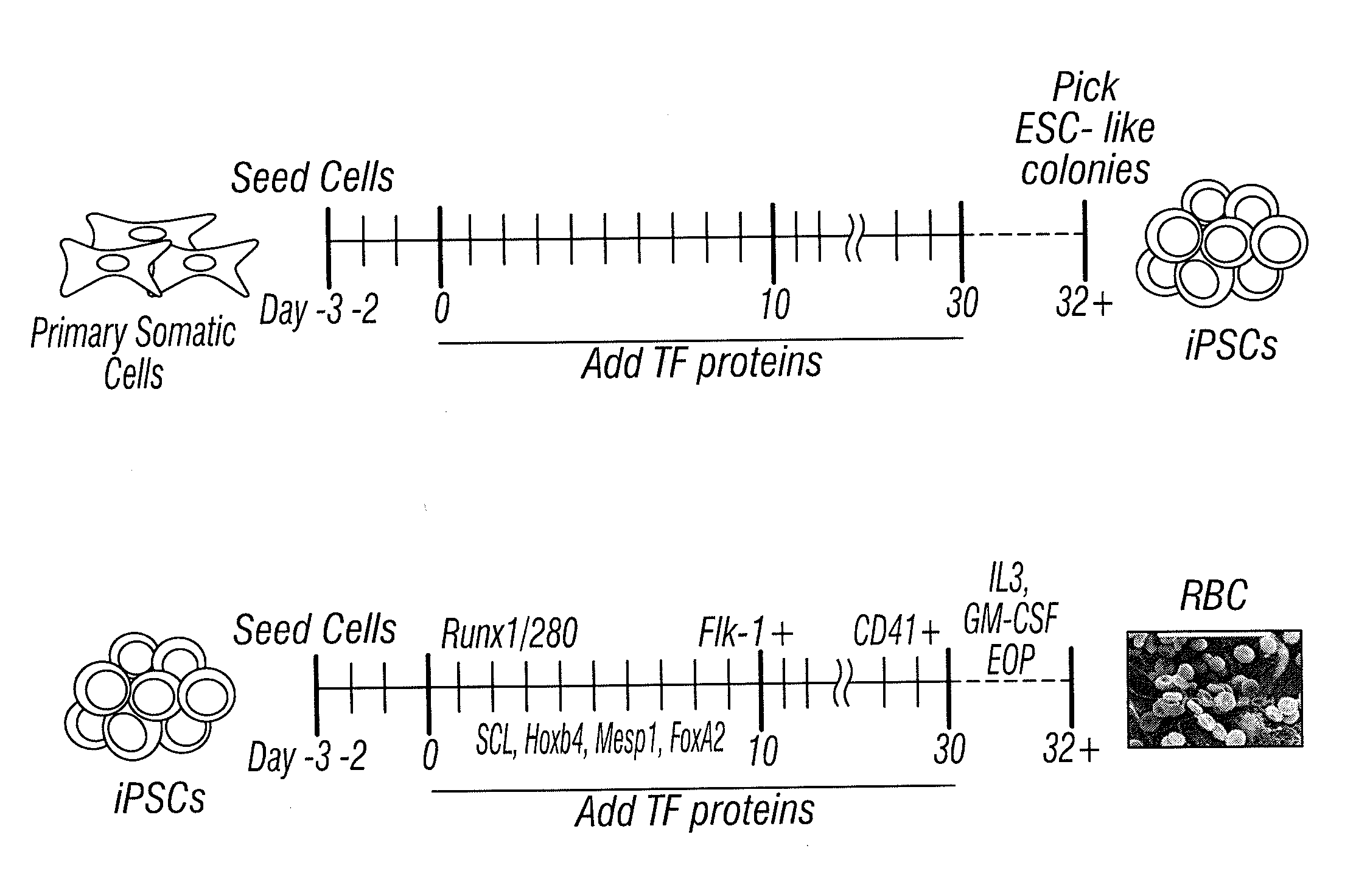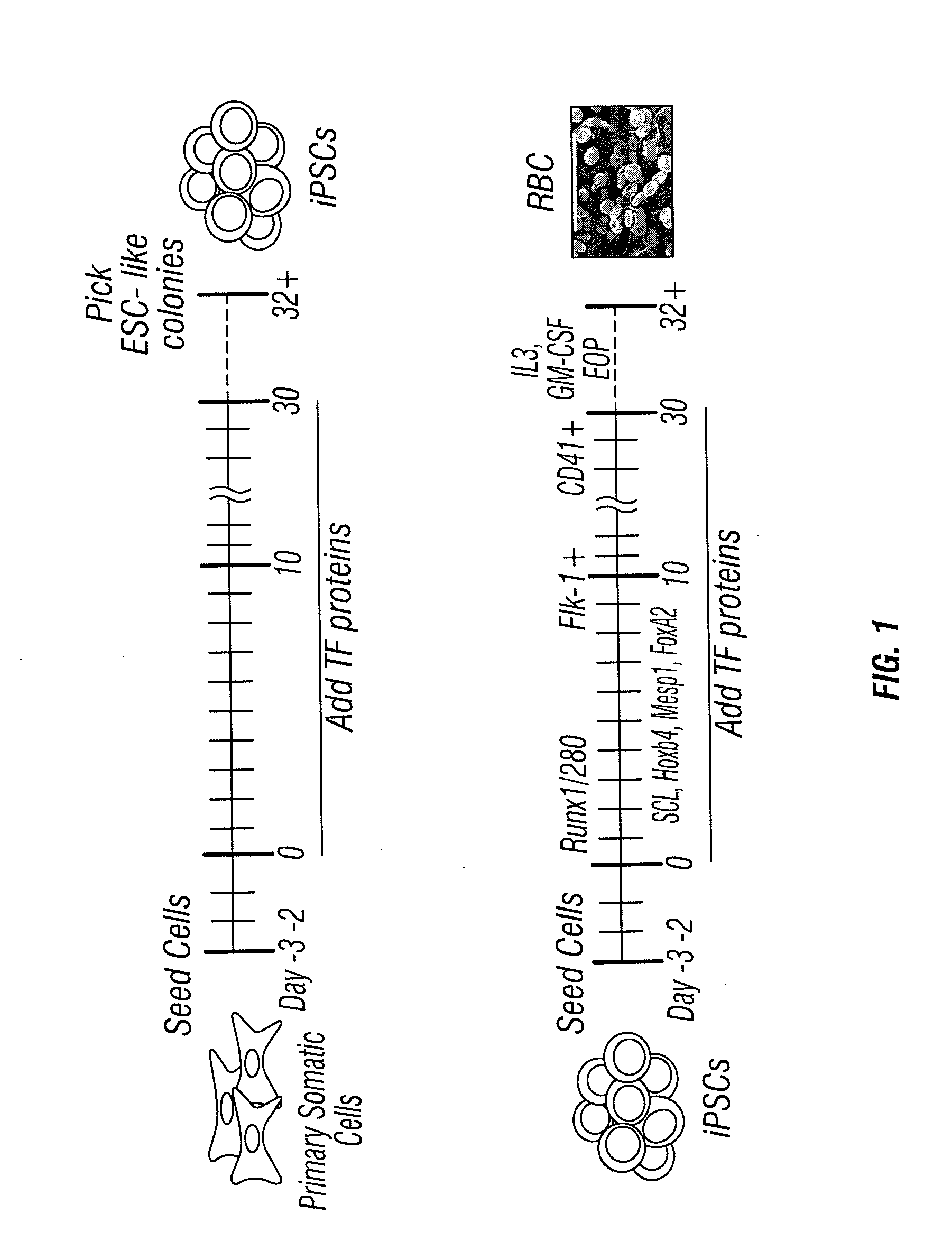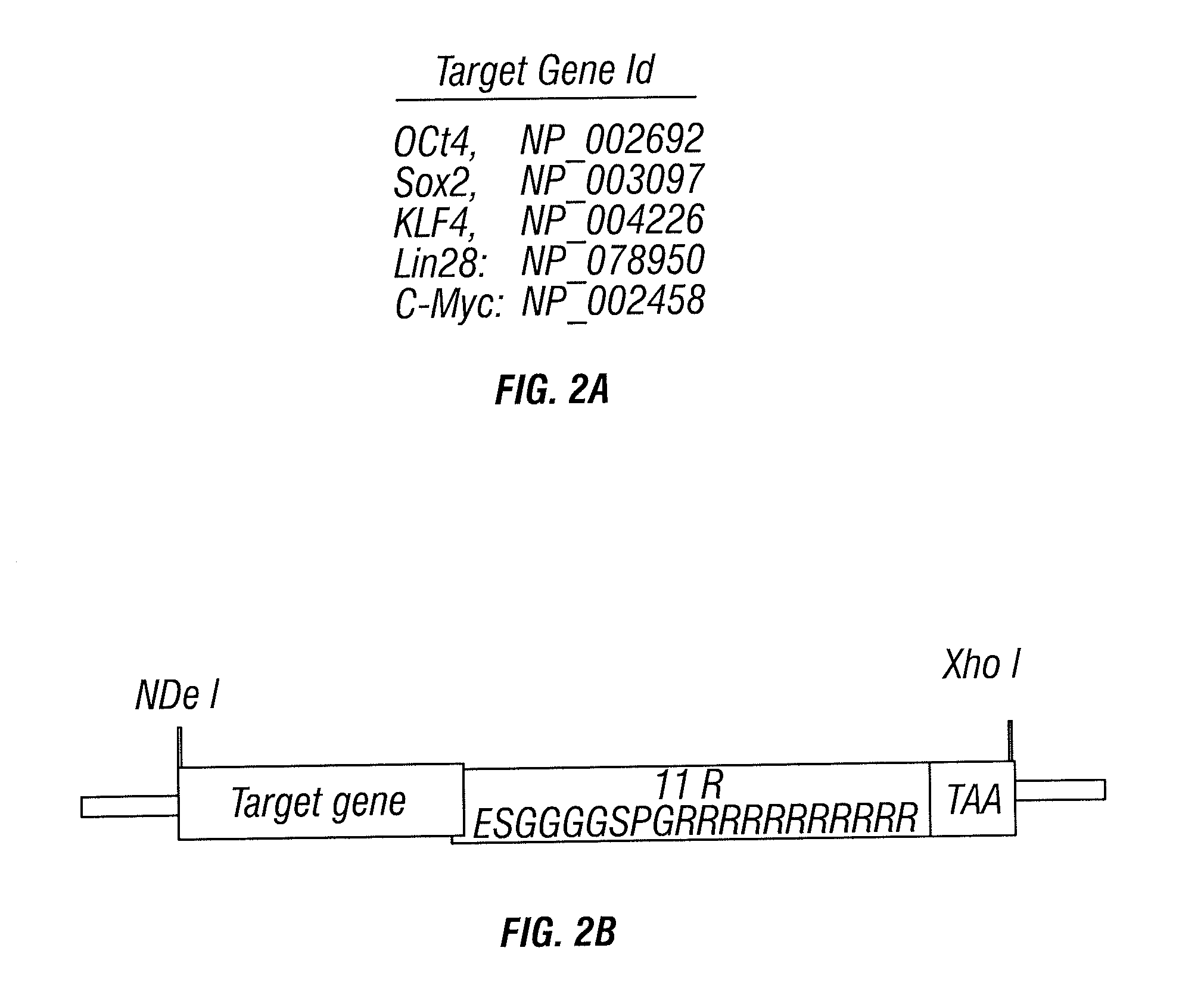Generating ips cells by protein transduction of recombinant potency-determining factors
- Summary
- Abstract
- Description
- Claims
- Application Information
AI Technical Summary
Benefits of technology
Problems solved by technology
Method used
Image
Examples
example 1
Human TF Gene Construction and Expression in E. coli
[0075]Previous reports by both Yamanaka's and Thomas' groups showed that, transcription factors, such as Oct4, Nanog, Sox2, KLF4, Myc and Lin 28, contribute to iPS cell generation. Lately, more data indicated that Nanog may be dispensable. In order to establish initial pilot test of protein based transformation assay, Oct4, Sox2, KLF4, C-Myc and Lin 28 were selected in the round of recombinant protein production for testing. The accession numbers of the sequences we used are as follows: OCT4: NP—002692; Sox2: NP—003097; KLF4: NP—004226; Lin28: NP—078950; and C-Myc: NP—002458 (FIGS. 2A & 12).
Gene Construction
[0076]In order to obtain high levels of protein expression in E. coli, all five human TF genes' codon region were optimized first, and full-length synthesized using DNA oligo based / PCR gene assembling technology. Gutman & Hatfield, Proc. Nat'l Acad. Sci. USA 86:3699-3703 (1989); Casimiro, et al., Structure 5:1407-1412 (1997). P...
example 2
Protein Delivery and iPS Assay Development
[0081]In order to quickly test the function of refold protein samples, target specific antibody based immunofluorescence test was applied initially by taking advantage of no-endogenous Oct4, Sox2 and KLF4 expression in mouse embryonic fibroblast (MEF) cells.
[0082]To further facilitate the functional screening process, the transgenic ROSA26+ / − / OG2+ / − mice were used for deriving MEF cells for testing protein transduction. ROSA26+ / − / OG2+ / − mice were derived from heterozygous Oct4-GFP (with the 18-kb Oct4 regulatory region) transgenic mice, which use GFP signal as an indicator of endogenous OCT4 gene expression pattern. Shi, et al., Cell Stem Cell 3:568-574 (2008). When OG2 MEF cells are reprogrammed into iPS cells, positive GFP signal indicates active Oct4 promoter activity.
MEF Cell Preparation and Protein Transduction
[0083]MEFs were prepared as follows: Female mice of the OG2 strain were routinely bred at Scripps Research Institute (collaborat...
example 3
Protein Transduction and iPS Cell Generation
[0086]For protein-based TF transduction treatment, 5×104 MEFs were seeded in 6-well plates, and incubated with 8 μg / ml of each target protein for 12 hours in media with 1 mM valproic acid (VPA), a HDAC inhibitor. Then, cell cultures were replaced with TF protein-free media for 36 hours. This treatment was repeated for four times for mouse MEF cells. At day 9, the treated cell were trypsinized and re-seeded on MEF feeder cells using ES cell medium for culture until compact domed colonies were observed between day 21 to 30 days (after first treatment day). At this stage, GFP signal, which was driven by endogenous mouse Oct4 promoter, was clearly observed in the colonies, which indicated endogenous Oct4 gene expression 2 weeks after induction. (See FIGS. 5B& C.) Meanwhile, staining of alkaline phosphatase also provided a rapid identification of ES cell-like colony in culture. (See FIG. 5D.) Initial colony formation efficiency was estimated fr...
PUM
| Property | Measurement | Unit |
|---|---|---|
| Time | aaaaa | aaaaa |
| Time | aaaaa | aaaaa |
| Time | aaaaa | aaaaa |
Abstract
Description
Claims
Application Information
 Login to View More
Login to View More - R&D
- Intellectual Property
- Life Sciences
- Materials
- Tech Scout
- Unparalleled Data Quality
- Higher Quality Content
- 60% Fewer Hallucinations
Browse by: Latest US Patents, China's latest patents, Technical Efficacy Thesaurus, Application Domain, Technology Topic, Popular Technical Reports.
© 2025 PatSnap. All rights reserved.Legal|Privacy policy|Modern Slavery Act Transparency Statement|Sitemap|About US| Contact US: help@patsnap.com



